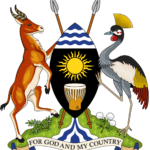
Bukomansimbi District Local Government
About Company
Location & Size
Bukomansimbi District is bordered by Gomba District to the north, Kalungu District to the east, Masaka District to the southeast, Lwengo District to the southwest and Sembabule District to the northwest.
Size and Topography
The district has a total land area of about 589.93sq kms. The landscape and topography in general is rolling and undulating with vertical gully heads and valley bottom swamps including streams flowing to lakes and rivers. Most parts of the district are dotted with the hills.
Climate: Rainfall, temperature, Humidity and Winds
The Climate of Bukomansimbi District is tropical in nature, being modified by relief and nearness to Lake Victoria. The rainfall pattern is bimodal having two seasons with dry spells between July and August, and January to March. The months of March, April and May receive very heavy and well-distributed rains of up to 1,200mm. The second season occurs in the months of September to December.
With the exception of a few years of declining trend in precipitation, the annual average rainfall received is between 1100mm – 1200mm with 100 – 110 rainy days. The average maximum temperature does not exceed 300 C and the minimum not below 100 C with almost equal length of day and night throughout the year. The humidity level is generally low throughout the district with the exception of lakeshore areas where it tends to rise.
Soils
The soil texture is varied from place to place ranging from red laterite, sandy loam and loam but is in general productive. Soils are generally Fertile, characterized by red coloured sandy clay loams.
Hydrology
There is a huge amount of water flows through streams to lake and river every year more especially in rainy season.
Vegetation
The total geographical area of the district is about 599.7sq km. 60008 hectares of land is under cultivation. The small portion is covered by wetlands and marshlands. The district doesn’t have gazetted forests but has private owned forest plantation
Mineral Resources
On mineral resources, no major geological studies have been carried out in the district to determine presence of minerals. However, there are indications about the abundant clay and sand that can be used for glass manufacturing. There are a number of stone querries and clay deposits that are used for providing construction materials. Efforts are being stepped up to have revenue mobilized and collected from these sources.
Population & Culture
The district currently has a total population of 151,413 people (2014 census results population). According to the 2002 Population and Housing Census, the population stood at 139,556 people with a growth rate of 0.84% compared to a growth rate of 0.7% in 2014 with a population of 151,413. The population density is 252 persons per square kilometer. The District has a rich cultural heritage. It has also diversity in ethnicity. The majority of the people are Baganda (77%) followed by Banyankole (9%), Banyarwanda (8%) the rest are small tribes. Most of the tribes practice Buganda cultures.
Demographic and Socio-economic Statistics
Statistics are an integral part of the enabling infrastructure for District/National development. They are important for public policy and programme formulation, implementation, monitoring and evaluation. They are critical to District development planning and implementation of sectorial projects and research activities. This section presents statistics on demographic characteristics of the population including population size, growth, distribution and socio-economic indicators which affect the population.
Political and Administrative Structure
The District Council is the highest political authority in the district. It has 17 members headed by a District Local Council Chairperson. The technical team at the district is under eleven sectors and headed by the Chief Administrative Officer. The district is comprised of two counties, four Town Councils and five rural sub-counties. There are 39 parishes and 254 village councils. The table below indicates the administrative units in the District
Vision & Mission
District Vision
A population which is geared towards socio-economic development and livelihood improvement by 2040
District mission
To achieve a sustainable socio-economic development through efficient provision of quality services to the people of bukomansimbi district in confromity with national policies and local priorities


